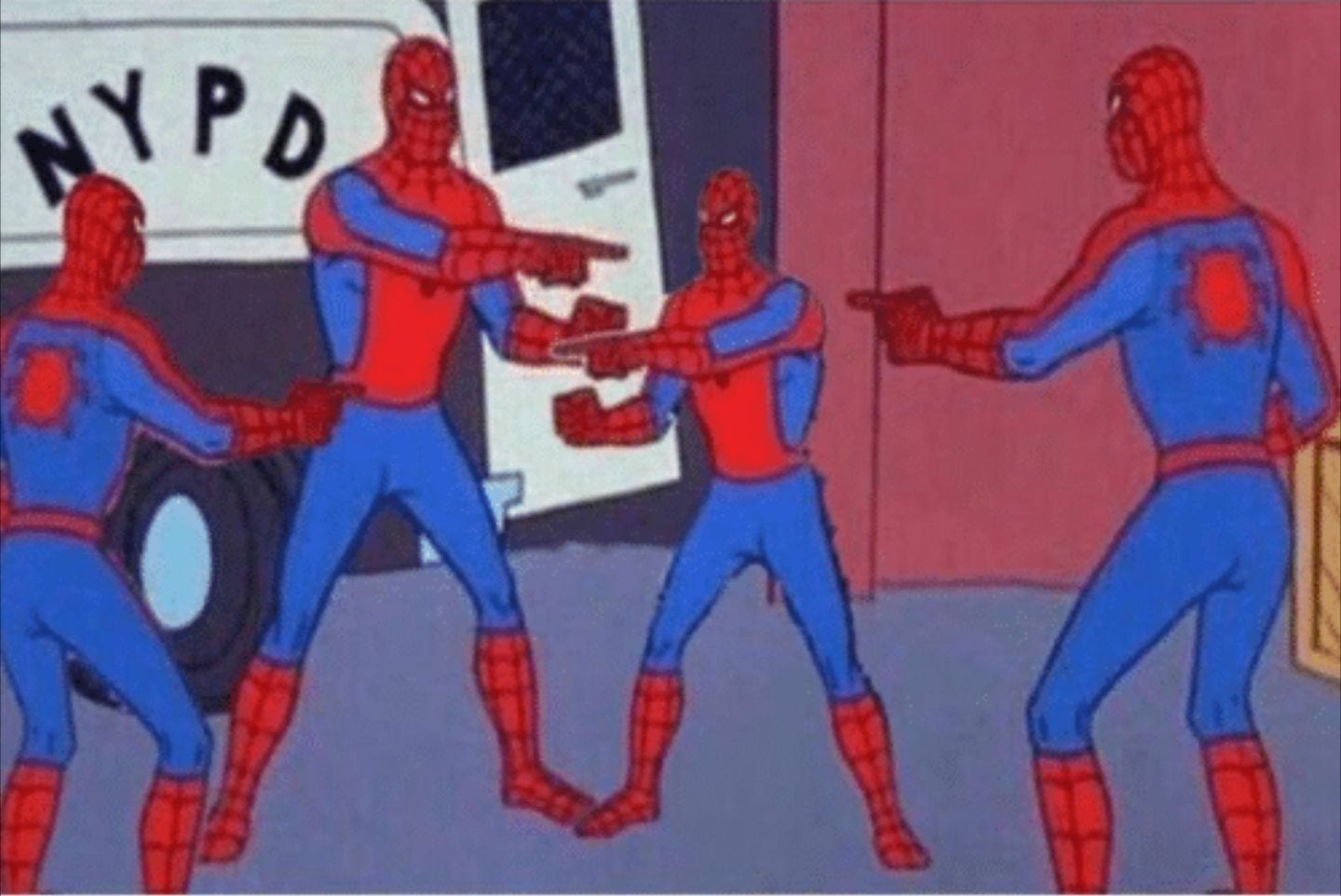Why Do All Websites Look the Same?
Why the Internet Feels Like a Copy of a Copy (and What to Do About It)
"If you’ve seen one website, you’ve seen a million more."
It is undeniable that there has been an explosion of brands in recent years. Many businesses and people have come to realize the power of building a brand.
However, despite this boom in brand knowledge, brands have failed to make unique the one piece of online real estate they truly own—their websites.
If you’ve seen one website, you’ve seen a million more. And for good reason.
There is a familiarity bias. Websites are stereotypically static information dumps, not hubs for interaction.
There are templates that reduce the mental and financial cost of building a site.
A deeper understanding of UX principles also creates a standardization of web design practices, resulting in a rigidity in website structure and blurring the line between form and function.
Even with increased brand consciousness, branding has been reduced to logos, colors, and occasionally brand tone—leaving organizations and personalities with husks of a brand identity.
"Even with increased brand consciousness, branding has been reduced to logos, colors, and occasionally brand tone—leaving organizations and personalities with husks of a brand identity."
For some reason, many ‘brands’ prefer to play it safe, fearing the risk of evolution or engaging with anything that isn’t as bland as oatmeal.
So, boring brands reference themselves, aided by web designers and developers too jaded by their industry and bogged down by the many rules “UI/UX” imposes on them.
Another problem is that for many, branding is secondary. It is a means to an end they aren’t even sure about. The idea of building a brand has saturated the public zeitgeist to the point that people feel an awkward pressure to create an image… well, kinda.
Few are willing to do what it takes to build a decent identity, especially in this age of content.
Beyond blog posts, they can’t imagine themselves as content creators or tastemakers leading conversations and causes their customers want to join. This mindset prevents brands from reimagining their websites as integral tools for community building.
But Why Bother?
Boring’ isn’t an excuse. Every brand needs whimsy.
Artificial Intelligence
Unfortunately, the internet is evolving. Blog-driven SEO is no longer a differentiator. AI tools now scrape the web to answer queries instantly, reducing traffic to small and medium sites.
Yes, these tools hallucinate. Yes, their insights are surface-level.
But for many users, “good enough” wins, that’s a death knell for brands reliant on generic web presences.
Brands Rise on Personality
Perception is everything. To attract attention, you can’t afford neutrality. Yet most brands aren’t truly brands, they’re logos with vague missions. If your brand were a person, how would they speak? What would they wear? What politics or causes would they champion? Without answers, your website remains a sterile brochure.
Fun Matters
“Boring” isn’t an excuse. Every brand needs whimsy. Not every decision must be logical, because your audience isn’t purely logical. Experiment: turn your FAQ page into a choose-your-own-adventure quiz. Let your 404 error screen host a mini-game. If you’re risk-averse, start small—but start.
The Fix?
"Perception is everything. To attract attention, you can’t afford neutrality."
Personalize your website and turn it into an ever-expanding part of your content and community strategy. For some industries, this is straightforward. Sports betting sites, for example, thrive on interactivity: real-time game stats, virtual casinos, and live odds keep users hooked.
But this isn’t exclusive to entertainment.
Personal websites can transcend digital business cards. Imagine virtual clubhouses with lifestyle columns, project diaries, or simple games featuring fan leaderboards. Invite audiences to weigh in on your creative decisions through polls held on your website.
Forget SEO (for a bit). Build a series documenting your work’s twists and turns. Create subdomains for interactive experiments, such as mini-games to celebrate certain milestones. Update your website to reflect seasons or different parts of your business. For instance, if your business is into gift-giving, you could create a subdomain for sending cute messages to loved ones online.
Furniture brands can create a database of local woods they use, conservation efforts, etc.
Even SaaS brands can innovate. Take WeTransfer: a file-sharing service that fuels the creative economy. Their website doubles as an art gallery, showcasing collaborations with designers and photographers. It’s functional, yes—but also exploratory, deepening brand interaction.
The idea is to take some core part of your work and turn it into an interactive experience.
This gives people something to come back to beyond blog posts or generic information. For your audience, your website can become a safe haven, providing an escape from the mundanity of everyday life.
For your brand, it brews affinity, passion, and loyalty—all things with unquantifiable value.
Interestingly, the next frontier is to go back in time—to the beginning of the internet boom. Build websites as art, not just tools.
But first, I must ask—what does your brand stand for?
"In order to be irreplaceable, one must always be different." – Coco Chanel



